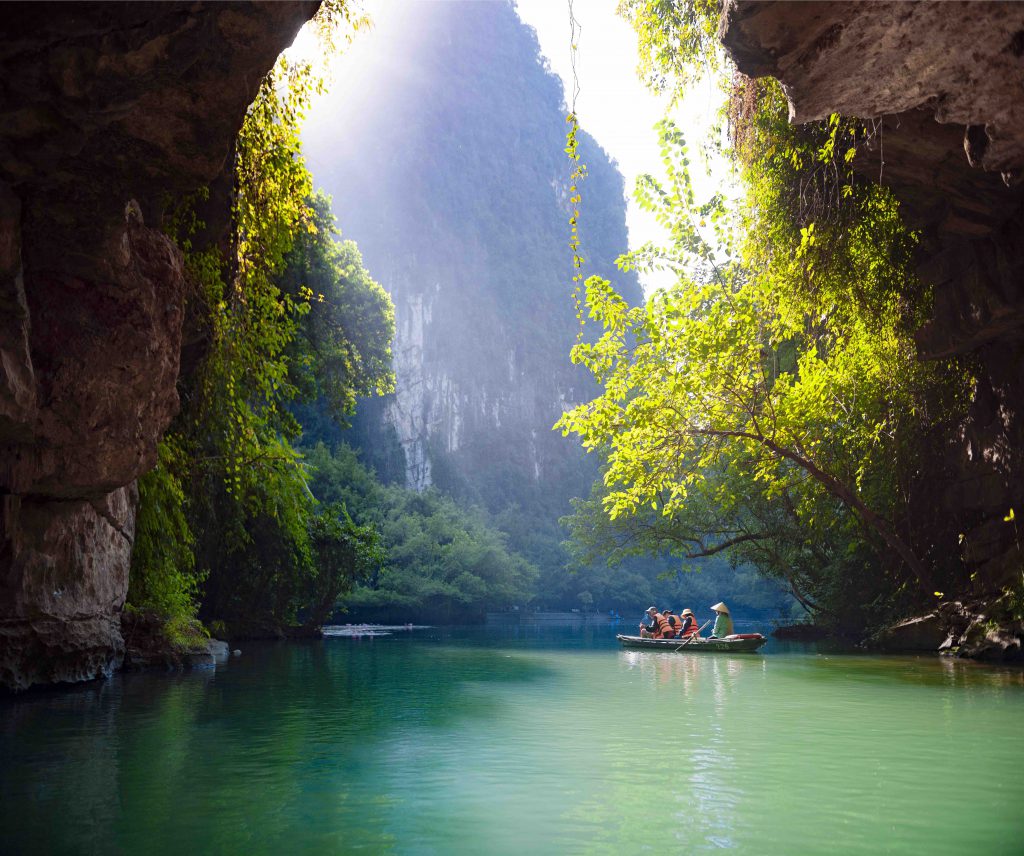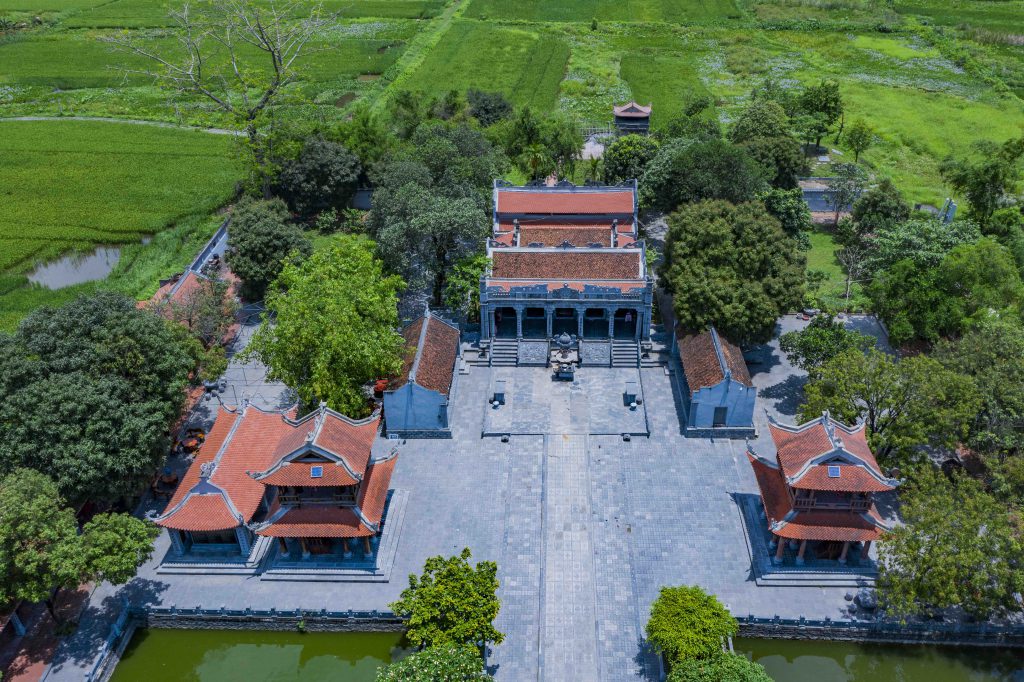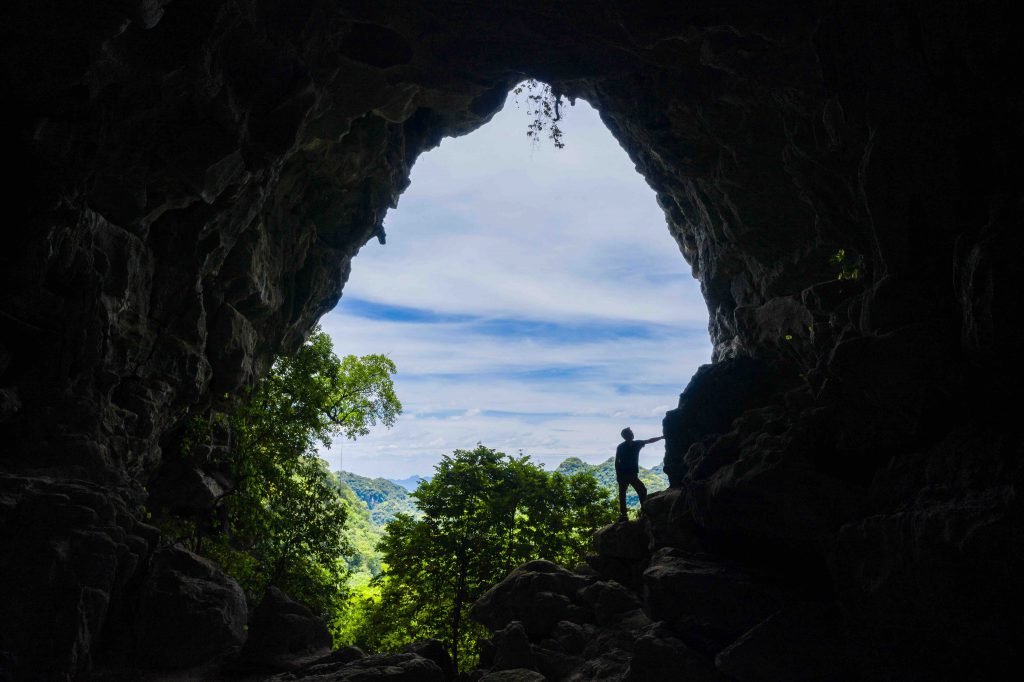Story: Nguyen Cao Tan
Photos: Amachau
Located in Ninh Binh province in the southern part of the Red River Delta, the Trang An Landscape Complex covers approximately 12,000 hectares. The capital of Dai Co Viet in the 10th century, this region is home to many famous landscapes celebrated in poems. Today, research, analysis, and comparisons by domestic and international experts in geology, geomorphology, and archaeology confirm that this site contains unique and globally outstanding natural and cultural values.

A repository of prehistoric human life
Over 30 prehistoric archaeological sites have been discovered within the Trang An Landscape Complex, inside caves, rock shelters, and on sandy terraces at the foot of mountains. The locations of these archaeological sites are diverse. Sites like Trong Cave and Boi Cave lie in caves and rock shelters at elevations of 70m to 145m above sea level. Sites like Moi Cave are found at lower elevations of 9m to 10m, while other sites occupy sand dunes only 4m to 5m high. Trang An holds varied and intact information about prehistoric humans and their lifestyles. This data weaves an intriguing story about human adaptation to major environmental changes, such as shifts from cold and dry to hot and humid climates, from continental to coastal environments, and even communities’ responses to natural disasters like earthquakes.
The sporadic appearance of Metal Age artifacts like pottery shards and stone axes, dating 3,000 to 4,000 years back, scattered and not aligned with cultural layers from the Stone Age within caves and rock shelters in the Trang An Landscape Complex (such as Nui Tuong Cave, Oc Cave, Vang Rock Shelter, Cho Rock Shelter, Thung Binh Cave, Ang Noi Cave, and Moi Cave) signals changes in the habitat of ancient Trang An people. Some people left the caves to settle in lower-lying areas.

The relics and artifacts unearthed within and adjacent to the Trang An Landscape Complex heritage site provide concrete evidence that humans continually occupied this region. These materials give scientists more information about the shift in habitation patterns following the direction of sea regression after the mid-Holocene sea transgression about 4,000 years ago. Humans moved from higher to lower elevations, relocating from enclosed spaces to open areas on the edge of the Trang An limestone massif. Groups that once dwelled in caves and rock shelters moved to outdoor settlements on sand dunes and alluvial plains along the ancient bay shore. Over time, these ancient inhabitants settled down to exploit marine resources and forest products. They lived outdoors, moving and penetrating deep into the core of the Trang An Landscape Complex via the Sao Khe, Den Voi, and Ngo Dong rivers, all of which flow in a northwest-southeast direction within the heritage site.
In Trang An, the settlement patterns of prehistoric humans were characterized by their adaptation to both land and sea, giving rise to cultural foundations that have endured for 30,000 years. This information provides valuable life lessons for dealing with present and future climate changes.

The cradle of culture
In the 10th century, the capital Hoa Lu was built with a focus on cultural revival, laying the groundwork for the flourishing Dai Viet Civilization in Thang Long – Hanoi.
The Trang An Landscape Complex also houses hundreds of temples, pagodas, shrines, and palaces. Religious and sacred architectural structures in caves and rock shelters, and on mountainsides all harmonize with nature and showcase high technical, design, and artistic qualities. Notable among these are two temples dedicated to King Dinh and King Le, featuring 17th-century wooden architecture with strong folk characteristics. Other pagodas and temples feature unique stone architecture. These relics are scattered around limestone valleys and the picturesque Sao Khe River.
Alongside these tangible cultural heritage sites are intangible cultural heritage elements like festivals, customs, and traditional crafts that have existed for thousands of years in villages and craft villages, forming the soul of Ninh Binh people in particular and Vietnamese people in general.
With outstanding cultural and natural values, the Trang An Landscape Complex is a prominent and worthwhile destination in Vietnam, offering assorted tourism experiences. It’s no wonder that in 2023, Forbes magazine named Ninh Binh one of the 23 best travel destinations in the world, while the annual Traveler Review Awards from booking.com ranked Ninh Binh seventh among the world’s top 10 most welcoming destinations.










